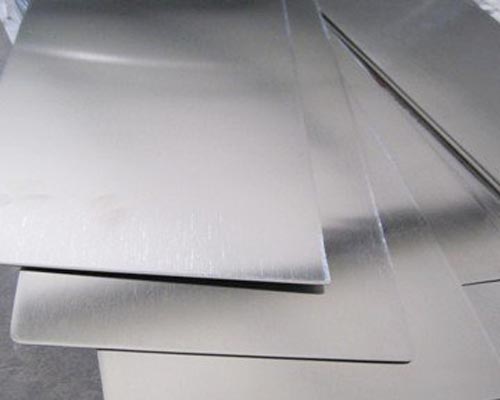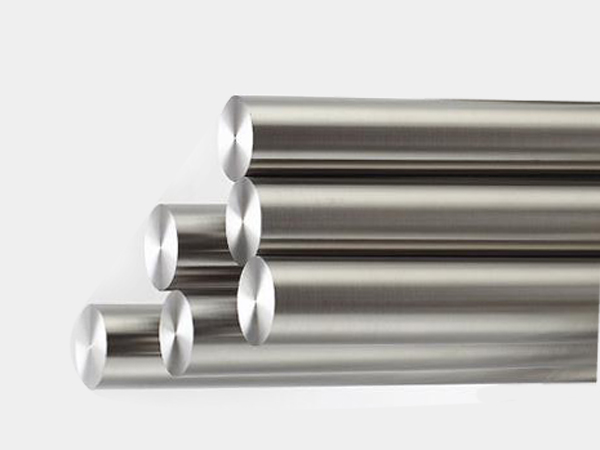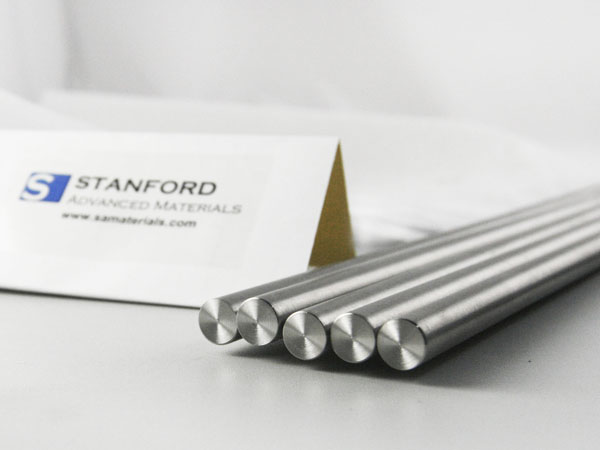Amazing Advanced Materials
LaB6 as cathode material has superior performance because of its high emission current density and low evaporation rate at high temperature. It has gradually replaced some tungsten cathodes in industrial applications. At present, the main application fields of six lanthanum borate LaB6 cathode materials are as follows:
New high-definition, high-current-emittance display and imaging devices, electron beam lasers and other high-tech industries are required in the fields of military and space technology, such as microwave vacuum electronic devices and ion thrusters, civil and military industries. In these high-tech industries, the demand for cathode materials with low temperature, high uniform emission, high current emission density and long life has been very tight.

Electron beam welding industry, with the development of economy, needs electron beam welding machine, electron beam smelting, cutting equipment cathode can meet the requirements of high current density, low escape power, and the traditional equipment is mainly using tungsten cathode (escape power is too high, current emission density is too small) can not meet the application requirements, and then
LaB6 cathode to Its superior performance has replaced tungsten cathode and has been widely applied in the electron beam welding industry.
High-tech instrumentation industry, LaB6 cathode has replaced tungsten cathode and other traditional hot cathode materials in electron microscope, Auger spectrometer, electron probe and other electronic devices by its high brightness, long life and other characteristics.
In accelerator industry, the stability of LaB6 against ion bombardment is higher than that of
conventional tungsten and
tantalum. LaB6 cathode is widely used in synchrotrons, cyclotrons and other accelerators with different structures.
In discharge tube industry, A.N. Broers and others have successfully realized the application of LaB6 cathode in gas discharge tube, laser tube and magnetron type amplifier.
Lanthanum boride LaB6, as an electronic component in modern technology, is widely used in civil and defense industries.
Electron emission cathode
Because of the low electron escape power, cathode materials with the highest emission current at medium temperature can be obtained, especially high quality single crystal, which is an ideal material for high power electron emission cathode.
High brightness point light source
Core components used to fabricate electron microscopes, such as optic filters, soft X-ray diffraction monochromators, and other electron beam sources.
High stability and high life system components
Its excellent comprehensive properties make it possible to be used in various electron beam systems, such as electron beam engraving, electron beam heat source, electron beam welding torch and accelerator, etc. for the fabrication of high performance components.
For more information, please visit
http://www.samaterials.com/
مشخصات

thermocouple wire. The diameter of the couple wire is 0.5mm and the allowable deviation is -0.015mm. The nominal chemical composition of the positive electrode (RP) is platinum-rhodium alloy. The nominal chemical composition of the positive electrode (RP) is platinum-rhodium alloy. The rhodium content is 13%, platinum content is 87%, and the negative electrode (RN) is pure platinum. The maximum service temperature for a long time is 1300 C, and the maximum service temperature for a short time is 1600C.
platinum-rhodium thermocouple wire. The maximum long-term service temperature of the thermocouple is 1600 C, and the maximum short-term service temperature is 00 C.
precious metal materials, and large one-time investment.
http://www.samaterials.com/
مشخصات
Thin film is a thin and soft transparent sheet, which is made of plastics, adhesives, rubber or other materials. It is a kind of two-dimensional material which is formed on the surface of the substrate by atoms, molecules or ions.
There are several thin films: optical film,
composite film, superconducting film, polyester film, nylon film, plastic film
and so on.
Thin films are widely used in electronics, machinery, printing and other industries.
Thin film materials refer to thin metal or organic layers with thickness ranging from a single atom to a few millimeters. Electronic semiconductor functional devices and optical coatings are the main applications of thin film technology.
Zirconia (ZrO2) has the characteristics of
hardness, compactness and inhomogeneity. The film needs to be dried to remove
its absorption.
The purity and importance of the material are not sufficient. The film usually lacks overall compactness. It benefits from the proper use of IAD to increase its refractive index to porosity to overcome its inhomogeneity. The purity reaches 99.99% base.
SAINTY et al. have successfully used ZRO2 as a protective film for aluminum and silver films. The ZRO2 film is obtained by using 700EV argon ion as a plating aid on room temperature substrates. It is generally white columnar or block, and the evaporation molecules are ZRO, O2.
Hafnium oxide (HfO2) is one of the most important high refractive index materials in ultraviolet to near infrared (UV-NIR) band. It has high band gap, high laser damage threshold, corrosion resistance and easy preparation. It is widely used in laser optical thin films, especially in the field of laser thin films with high damage threshold.
The combination of hafnium oxide film and low refractive index silica film can be used to fabricate high reflective film, antireflective film, polarized light splitting film, filter film and other optical thin film components.
The preparation methods of hafnium oxide thin films mainly include electron beam evaporation, ion beam sputtering, magnetron sputtering, atomic layer deposition and other physical vapor deposition techniques.
The hafnium oxide thin films prepared by
ion beam sputtering have the advantages of small absorption, amorphous
structure, low optical scattering, small defect density and so on, and have
become the Important process to prepare hafnium oxide thin films.
مشخصات
Molybdenum is a silver gray refractory metal, which is mainly used in the X-rays, iron and steel industry, most of which are directly used for steelmaking or cast iron in the form of industrial molybdenum oxide in the form of molybdenum oxide. The content of molybdenum in low alloy steel is not more than 1%, but the consumption of molybdenum in this area is about 50% of the consumption of molybdenum.
The addition of molybdenum in cast iron can improve the strength and wear resistance of iron. The nickel based superalloy with % molybdenum has the characteristics of high melting point, low density and low thermal expansion coefficient. It is used to make various high temperature components in aviation and space. Molybdenum is widely used in electronic devices such as electronic tubes, transistors and rectifiers.
Molybdenum oxide and molybdate are chemical compounds.

Molybdenum is a metal element found relatively late. It was distilled from molybdenite by Swedish chemist in 1792. Molybdenum has been widely used in industry due to its high strength, high melting point, corrosion resistance and wear resistance.
In metallurgical industry,
moly sheet is used as an additive in the production of all kinds of alloy steel, or with tungsten, nickel, cobalt, zirconium, titanium, vanadium, rhenium and so on, in order to improve its high temperature strength, wear resistance and corrosion resistance. Molybdenum alloy steels are used to make transport equipment, locomotives, industrial machinery and various instruments. Some 4% to 5% stainless steel containing molybdenum is used to produce precision chemical instruments and equipment used in seawater environment. High speed steel containing 4% to 9.5% can produce high speed cutting tools. Molybdenum and nickel and chromium alloys are used to manufacture metal parts of aircraft, corrosion resistant parts of locomotives and automobiles. Alloys of molybdenum and tungsten, chromium and vanadium are used for making alloy components and components of warships, tanks, guns, rockets and satellites.
Metal molybdenum is widely used as heating material and structural material for high temperature electric furnace, large electrode and grid of vacuum tube, semiconductor and electric light source material. Because the thermal neutron capture cross section of molybdenum is small and has high persistence strength, it can also be used as a structural material for nuclear reactors.
Molybdenum is used mainly in X-rays, lubricants, catalysts and pigments in chemical industry.
Molybdenum disulfide has good lubrication performance at high temperature and high pressure because of its lamellar crystal structure and its surface chemical properties. It is widely used as an additive in oil. Molybdenum is a catalyst component for hydrogen production desulfurization and other petroleum refining processes. It is used in the redox reaction of ethanol, formaldehyde and oil-based chemicals. Molybdenum orange is an important pigment. The chemical products of molybdenum are widely used in dyes, ink, color precipitation dyes and anticorrosive primers.
Molybdenum compounds are also widely used in agricultural fertilizers.
The abundance of molybdenum in the crust is about 1×10-6, and the highest content of molybdenum in granite is 2×10-6 in magmatic rocks. Molybdenum belongs to transitional ferric elements in geochemical classification. Molybdenum is mainly combined with sulfur to form molybdenite in the ore forming process.
For more information, please visit
http://www.samaterials.com/
مشخصات
TZM, otherwise known as Titanium Zirconium Molybdenum is an established Molybdenum alloy. The main advantage of using this is that it can very well support the applications where high strength and creep resistance is highly necessary. It is a stable metal which is not influence through alleviated temperature. It can function well without getting weakening or softening.
The alloying helps in the vacuum arc-casting process, through which complete melting and blending of
molybdenum oxide and alloys can be done. Thus a wide assortment of molybdenum alloy mill products and
molybdenum alloy can be created with the help of two most important consolidation techniques such as vacuum arc-casting (VAC) and powder metallurgy (PM).here the user through the use of this method can get a alloy of their own choice by creating a proper proportion of required metal needed for their specific application. The mill products that can be created through the course comprise of forging billets, rod, bar, plate, sheet, foil, and the like.

There are some significant applications where these TZM products can be used and those are in:
• Creating the component parts intended for sintering, HIP, as well as heat treatment furnaces
• Production of metals for rotating anodes in the health field for the use of medical diagnostics.
• The creation of boats for annealing and sintering purposes with a temperature not below then 1400 C
• structuring tools like hot runner nozzles used in plastic injection moulding
• forming moulds for light-alloy casting
• And billets used in the isothermal forging.
Apart from the general use as well as its use in the industry, certain more application of the metal is there which are found in the field of military purposes. Torpedo engine is the best examples of TZM alloy found in the field of military-industrial applications. This alloy is used in the rocket nozzles, valve body, and the nozzle throat and gas pipeline. TZM alloy is the kind of metal with extreme elevated melting point, which can be very well perform the die-casting mould activity for various ferrous and non-ferrous metal. It is also useful in the Bulb furnace mechanism used in colour television where platinum - rhodium alloy are used to plate molybdenum alloy which need high temperature glass melt substance to withstand in the condition arising in the course of the long-term high temperature shock. Besides this TZM alloy is also applicable for the purposes like radiation shield, heat exchangers, cage, rail, etc.
For more information, please visit
http://www.samaterials.com/
مشخصات
I use advanced technology everyday in my life, especially Rare Earth materials.
Where I use them is in my phone and laptop, I use these on constant day-to-day basis, it is very vital to me to have these things to complete my school work and use in my free time. Rare Earth materials, such as tungsten rod and boron nitride powder,
Over the years computers have become smaller and smaller thanks to the advancement in Rare Earth materials. These materials have made computers run more effective and some of these materials are used to make components in laptops and other electronics, and I think in the future that they will get more smaller, lighter and more advanced. These advancements mean less space for computer components, and more space for RGB and lights in your computer. But on a serious note, I think that advancements in this particular field can be very beneficial.

Make computer parts smaller and faster can make someone or something more productive, it will decrease time and space needed to do things. Rare Earth materials play an important role in my life, and I didn’t even know much about them. I think that the future of technology lies with the advancement of Rare Earth materials, it is an important thing that will have many benefits for us.
http://www.samaterials.com/
مشخصات
In 2011, I was with my dad when he fell 25 feet off of a climbing wall at our health club.
I watched both his legs break due to a belay malfunction, and I watched the ambulance carry him away. That night, my family and I didn’t know if he would ever walk again. In fact, we didn’t even know if he would survive.
He was in ICU for three days, where they determined there was no internal bleeding, and he wouldn’t die. They still had to perform surgery on his shattered legs though, and they decided the best course of action would be to put titanium rods and screws in his legs, the bars being much stronger than his healing bones, and that the titanium may better enable him to walk again. He spent six weeks in the hospital, every day going to physical therapy to try and regain the leg strength he lost. When he was released, he was still in a wheelchair, but the doctors had hope that he would walk again, due to the rods holding his bones in place and making it so they healed correctly. The use of titanium was and still sort of is a mystery to me, but I do know that using it to reinforce his bones would better make sure they would heal straight, and it would make his legs stronger as they healed, enabling him to do physical therapy and hopefully gain back his strength.

Before the accident, my dad had been quite an athlete. Him, my brother and I all used to speed skate. He did a ton of road and mountain biking, and he loved to climb. Afterwards, the doctors were honest, and they told him they doubted his body would be able to sustain such an athletic lifestyle anymore. His bones just wouldn’t be able to take it. As the healing process went on though, he started to gain some of those skills back. He didn’t have as much stamina as he used to, but as the months went on, he gained more and more, and he started going speedskating again every week, and biking whenever he could.
I really am not an expert on
titanium metal. I know it’s a very strong metal, and I know my dad has 2 titanium rods of it in his legs. Other than that, I’m not incredibly educated about it, but I can’t help but be thankful that it was able to be used in medical procedures, namely the one that helped heal my dad. I hope that more people get to use these scientific advances in materials to help get their lives back like my dad did.
For more information, please visit
http://www.samaterials.com/
مشخصات
- test
- بانک مووی
- سینما افکت
- ابوالفضل سلیمانی خراسان رضوی
- سایت رسمی کینگ بند
- مرکز تعالی سازمانی
- درمانی
- kamalnursinghome
- فریاد
- امیرعلی سرشار
- دلسا چت | چت دلسا | چت روم دلسا
- sazinehchoob
- AH MOBILE
- درآمداینترنتی
- وب گردی با شیما
- حیات
- مهرپردازش
- مرکزمهارت آموختگان
- تاسیسات اکابن
- موسسه آموزشی کنکور ونوس
- در جستجوی نام خدا




درباره این سایت